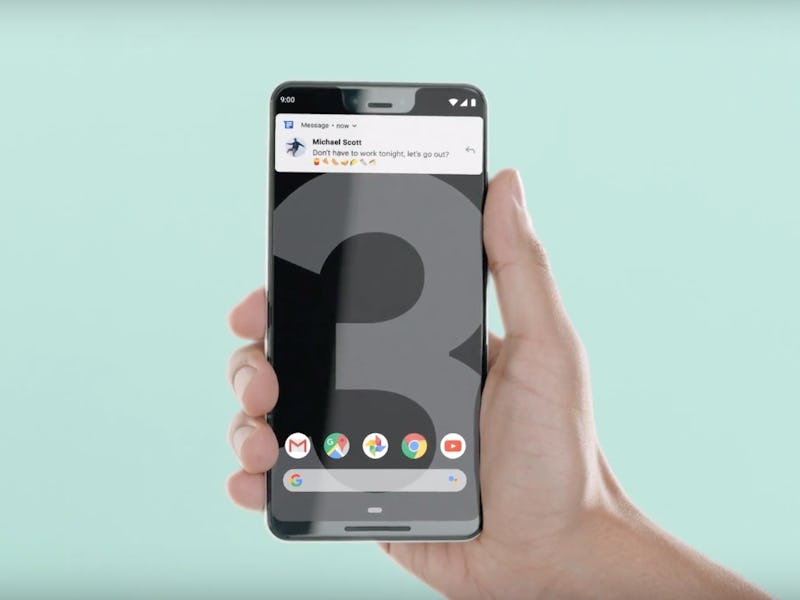How Google Gave the Pixel 3 the Best Touch and Feel in the Game
It's better than ever.

Every time you unlock the Pixel 3 or 3 XL, send a text, slide through open apps, or summon the Google Assistant — the tips of your fingers get a little love tap. That’s Google’s newly improved haptic feedback system letting you know the Pixel is picking up what you’re laying down.
All major smartphones include similar vibration notifications, but Google has outdone itself this year. Texting on the Pixel 3 felt like I was using a QWERTY phone, but with a vibrant OLED display that has become the standard amongst flagships. Google hardware engineer Debanjan Mukherjee tells Inverse that achieving this improved sense of touch-and feel required a mix of improvements to both the hardware and new software.
“Haptics feedback is improved through a joint optimization of hardware and software,” he says in an email. “The smart haptics controller drives a vibration motor at a high voltage and provides precise control. This results in crisp and differentiated touch feedback which is consistent throughout the system and applications. The vibro-notifications are pleasant, noticeable and synchronized with audio for ringtones.”
The combination of hardware and software improvements made for a more satisfying feedback without overdoing it. When I would type out a text, every keystroke prompted a burst of feedback. But when I held down the backspace key, it did not prompt a long vibration and let me erase my bad Tweet without buzzing my finger to death.
This is in steep contrast to the LG V40 ThinQ that makes its haptic motor spaz out when holding down the backspace button.
As for the motor itself? Mukherjee says Google used a linear resonant actuator (LRA) in the Pixel 3, which is a tiny magnetic component attached to a spring that is moved up and down by an electrical signal. This is in contrast to the rumble motors inside of many video game controllers that rotate an unbalanced metal component to shake up the device. Both of these result in fairly similar results, but LRAs are easier to squeeze into smartphones because they don’t have any externally moving parts.
If the haptic feedback on the Pixel 3 seems like a bit much for you at first, you can easily turn it down. To control how much the Pixel 3’s LRA vibrates, simply scroll down to Accessibility, and navigate to Vibration found in the lower half of the menu. From there you’ll be able to set how prominent you want the haptic feed back to be.
I’ll be keeping mine on high.